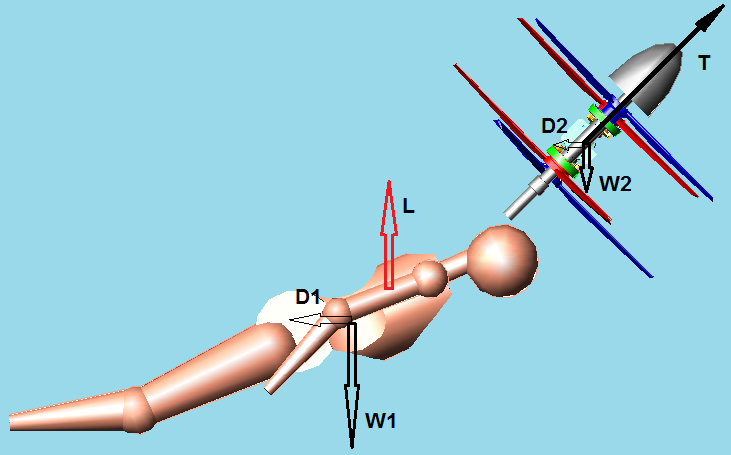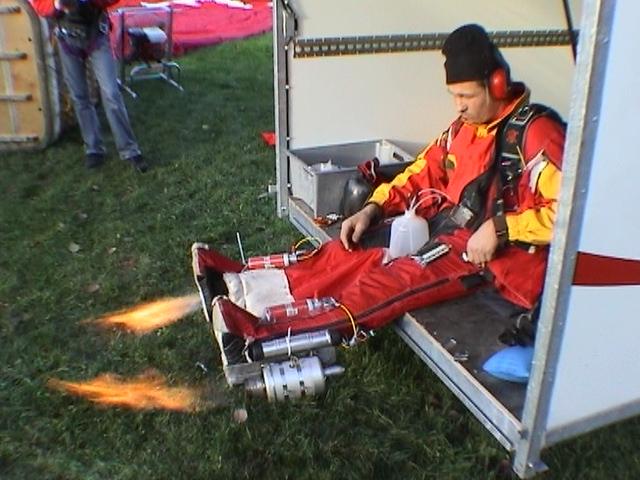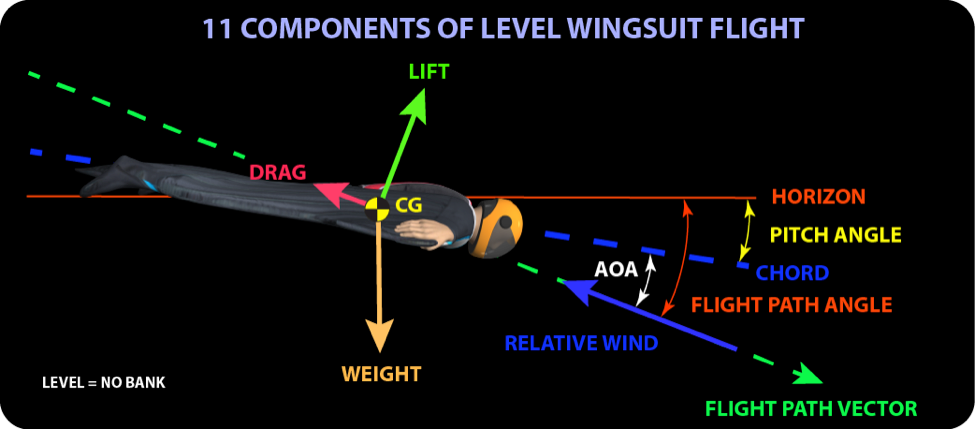Hello Rodak.
You write:
“So how does the acceleration of air by the first meshed propeller affect the second overlapping propeller's activation of airflow? And, for that matter, how is the second propeller in the counter-rotating system affected by the first propellers acceleration of the airstream? These are factors that affect the efficiency of your craft.”
Quote from
https://www.pattakon.com/GoFly/DTR_1.pdf , page 4 (it is the DEVICE TECHNICAL REPORT as filed to the GoFly / BOEING contest; more at
https://www.pattakon.com/GoFly/index.html )
Counter-rotating and contra-rotating propellers
The left upper and the left lower propellers compose a pair of “contra rotating” propellers (the one driven by the right engine, the other driven by the left engine, both rotatably mounted on the same pipe).
The right propellers comprise another pair of “coaxial” contra-rotating propellers.
The two engines operate independently from each other and can run at different revs if desired (to optimize the overall thrust and mileage).
For instance, if the lower propellers are similar (same diameter, same pitch, same design etc) to the upper ones, the lower engine may run at different rpm to align its propellers with the different air stream they “see” as compared to the air stream the top propellers “see”.
The set of the four propellers can be regarded as
two “contra rotating” sets of counter-rotating propellers.
A common characteristic of both, of the contra-rotating propellers and of the counter-rotating propellers, is the higher thrust to power ratio.
End of quote
You also write:
“Please note that although you constantly reference the V-22 the V-22 has an actual wing to provide lift during level flight which you do not.”
The fixed wing of the Osprey V22 gives it a stall speed of 204Km/h - 126mph (in airplane mode).
Visa Parviainen (the first powered wingsuiter who achieved a sustainable horizontal flight) had a lower stall speed.
According Wikipedia: “
The V-22 loses 10% of its vertical lift over a tiltwing design when operating in helicopter mode due to the wings' airflow resistance.”
The fuselage of the Osprey V22 is also a wing.
In the Portable Flyer the wing (and the fuselage) is the body of the pilot.
A fixed wing (say, like the Delta Wing of Yves Rossy, or like the wing of the V22) can be used in the Portable Flyer too, but it would make it vulnerable to wind gusts during vertical take-off / landing.
The body of the pilot of the Portable Flyer (either wearing a wingsuit, or not) is a flexible wing and provides lift and drag. With the wingsuit the same lift is achieved at lower speeds.
You also write:
”You are relying entirely on engine power to provide lift. As discussed previously, as the angle of the propeller(s) approaches horizontal there is a huge fall off of the vertical lift component (cos Θ IIRC).”
It goes the other way:
As the speed increases, the aerodynamic lift on pilot’s body (or on the wingsuit the pilot wears) increases, allowing the propeller axes to lean more and more from vertical.

At high speeds the thrust from the propellers is used mainly to “take” (to bear) the aerodynamic drag, while at lower speeds the thrust from the propellers is used mainly to “take” (to bear) the weight.
For instance:
during hovering, 100% of the propellers’ thrust is “consumed” to keep the pilot / Portable Flyer at the same altitude / height,
while during horizontal flight at 200mph (~300Km/h), almost all the thrust from the propellers is “consumed” to cover the aerodynamic drag, which means near horizontal propeller axes.
Quote from the abovementioned DEVICE TECHNICAL REPORT :
With the pilot wearing a wing suit or a tracking suit,
at 100mph cruising speed (87kts / 160Km/h / 44.5m/sec) the required thrust is about 66lb (30Kp, 300N and the calculated power is 300N*44.5m/sec = 13.5kW = 18bhp (data taken from the “First jet powered Birdman flight” at
http://www.dropzone.com/news/General/Fi ... _flight_61 3.html )
End of quote.
In order to sustain a horizontal cruise speed, the only that the wingsuiter Parviainen needed was a horizontal push of 66lb / 300Nt .
If instead of having two jet turbines secured on his legs:

Visa Parviainen was holding an OPRE Tilting engine driving two counter-rotating propellers (not necessarily as big as those of the Portable Flyer), he could sustain a horizontal cruise speed with the propeller axes being completely horizontal.
Thanks
Manolsi Pattakos




